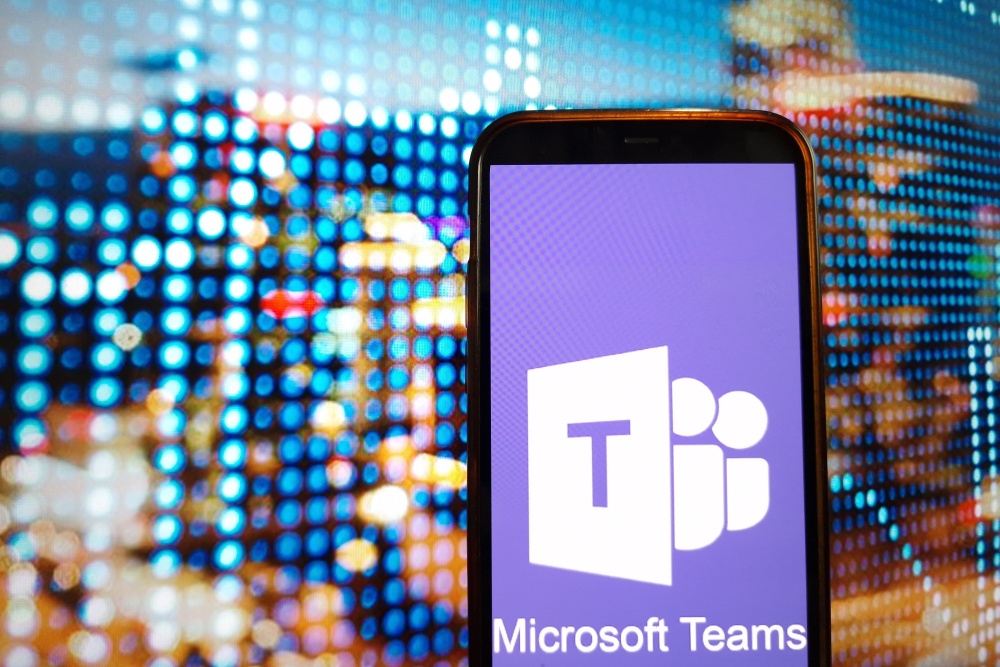Microsoft held its Ignite conference last week. If you haven’t heard of Ignite, it is Microsoft’s vehicle for making new product and service announcements. Of course, it will surprise no one to learn that included among the many announcements are a raft of Ignite Teams features. There are too many new features for me to cover in this post. If you want to read about them all, go here. I’m going to focus on the Ignite Teams features that will resonate most with our customers. I want to especially focus on the new Ignite Teams features that will support collaboration in a hybrid return-to-work setting.
Why do I want to focus on hybrid return-to-work? Because we are entering a new context for collaboration. I have written about this before. Before the pandemic we were accustomed to meeting face to face, either in person or via room-based video conference systems. As the pandemic took hold and we all shifted to working from home, we got used to collaborating via Zoom calls from our house or apartment. To put it a different way, we went from an “everyone in the room” experience to a “no one in the room” experience.
Now, with hybrid return-to-work, we are going to see a blended context. Some of us will attend meetings by joining together in a conference room at our office. Others will join remotely via video. It is this blend of face to face and remote collaboration that will require additional tools and meeting protocols for greatest success. Now, let’s talk about how some of these Ignite Teams features support this need.
Mesh
No doubt this first of Ignite Teams features will get the most publicity, both negative and positive. I suppose it didn’t help that Microsoft announced support for immersive workspaces and avatars while Facebook was announcing their name change to Meta and their focus on conquering the metaverse.
If you’re a fan of video games, you are undoubtedly used to setting up an avatar and playing in a virtual environment. If you are not a gamer, this feature is a bit of an eyeroll. One commenter thought that Mesh should be called “legless mode” since the avatars are only animated from the waist up.
I don’t know if this Ignite Teams feature is going to enhance the typical work meeting. It seems like we would be just as happy to see someone’s actual face. I do think though that establishment of an immersive space and avatars could be useful for replicating the water cooler experience that we know from working in the office.
When we are in a meeting, we know why we’re there and we’re focused on the meeting topic. If we are hanging out in a virtual lounge, there is no agenda, and we are waiting to see who might show up that we interact with. In this kind of scenario, I think having an immersive space that looks like the lunchroom or lounge etc. would be useful. It’s also helpful to use an avatar to represent ourselves as we can emphasize some aspect of ourselves that we would like to share with others. My naturally curly hair, for instance.
So don’t give up on immersive spaces and avatars just yet. They may help integrate onsite staff with those that are remote from the office. Microsoft is just going to have to do something about the dangling arms on the avatars.
Improvements to Teams User Experience
Sometimes it’s the small improvements that can have an outsized act impact on user satisfaction. Here are some Ignite Teams features that will get a lot of love.
- You can now assign meeting roles via a scheduling form when you set up a Teams meeting. For instance, you can indicate which participants are presenters, which are organizers, and which are attendees. This can make for a more effective meeting.
- It will now be possible to see the order in which meeting attendees have raised their hands. This was difficult to do in the past. I’m glad to see this Ignite Teams feature.
- And did I mention emojis? You have an additional 800 emojis to choose from. Time to get creative!
- It will soon be possible to share a channel with guest users. This will eliminate a lot of Teams overhead. Right now, when we want to invite guest users to a team, we must set up a parallel team to our internal one. No more. Now we can invite guest users to the one team and limit their access to a shared channel. I think this will make Teams a lot easier to use for collaborating across organizations.
- And finally, when you hover over a person’s name to communicate with them you will see their time zone on their contact card. If you work in an organization that is distributed across time zones this will help you understand whether the person you want to message is in their workday or off work. I can see this being especially helpful for users that are contacting someone for support. Now they have a better sense of whether the support person is available to answer them right away or not.
Teams Webinars Also Gets Some Improvements
When the pandemic first began, I was doing a lot of webinars. These Ignite Teams features will go a long way to making the webinar experience more positive for organizers and attendees.
- The Teams webinar will automatically create a green room where webinar presenters and organizers can meet. To date I have been involved in webinars where we were required to set up a parallel team meeting among the webinar presenters and organizers to share information and send private messages. This will simplify the webinar experience for sure.
- This next Ignite Teams feature is a lifesaver. We will now be able to designate up to ten participants as co-organizers. This means we can share tasks such as managing chat, admitting people to the meeting etc. Having multiple co-organizers allows the presenter to focus on their message and the audience.
- Co-organizers will also be able to select whose video feed is showing in the webinar. And they can select what content to show as part of the webinar.
Administration and Governance
There are some nice Ignite Teams features here as well.
Administrators can now create and deploy retention policies that apply to Teams private channel messages. I have had customers asking me for this.
Retention policies can now be targeted for specific groups of users. For instance, you might have a different teams retention policy for your Finance team compared to an administrative team.
Lastly, IT admins can now designate certain users as priority users. The admins can monitor the collaboration experience of these users and get real-time alerts concerning them. Every organization has a few users that we all want to ensure have the best collaboration experience. Now there is a way to achieve that.
Bonus: E911 for Home Workers
I will admit it. This last of the Ignite Teams features struck me based on my experience working in telephony and with emergency response 911 systems. If you use Teams Phone System, this will be an important Teams improvement for you.
Teams is presently set up to allow emergency responders to know where you are in the office. Of course, this information must be added by a Teams administrator. But once the information is in place if you call 911, they will know to look for you (for instance) in cube #11 on the second floor.
With the pandemic and everyone working from home, this left a gap in E911 service. With this Ignite Teams feature, a user who calls 911 from their organization’s Teams phone or phone client will pass information on where the user is located. Meaning what street address they are at. This is great news as it means someone calling 911 using their Teams phone can have emergency responders routed to their home where they are instead of being sent to an empty office.
I like the way that the Teams user experience gets tweaked for the better by these Ignite Teams features. Heck, announcing the emojis themselves will make you a hero. And that feels nice, right?





0 Comments